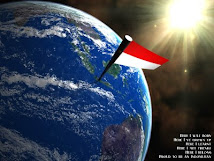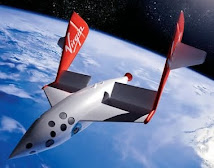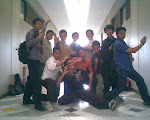Peta Pembangkit Tenaga Nuklir di Prancis
Nuclear Power in France
*France derives over 75% of its electricity from nuclear energy. This is due to a long-standing policy based on energy security.
*France is the world's largest net exporter of electricity due to its very low cost of generation, and gains over EUR 3 billion per year from this.
*France has been very active in developing nuclear technology. Reactors and fuel products and services are a major export.
*It is building its first Generation III reactor and planning a second.
*About 17% of France's electricity is from recycled nuclear fuel.
Bagaimana Bisa Negeri Eiffel ini Maju dalam Bidang Iptek Nuklir?
Sejarah
France has a long relationship with nuclear power, starting with Henri Becquerel's discovery of natural radioactivity in the 1890s and continued by famous nuclear scientists like Pierre and Marie Curie.
Before World War II, France had been heavily involved in nuclear research through the work of the Joliot-Curies. In 1945 the Provisional Government of the French Republic (GPRF) created the Commissariat à l'Énergie Atomique (CEA) governmental agency, and Nobel prize winner Frédéric Joliot-Curie, member of the French Communist Party (PCF) since 1942, was appointed high-commissioner.
He was relieved of his duties in 1950 for political reasons, and would be one of the 11 signatories to the Russell-Einstein Manifesto in 1955. The CEA was created by Charles de Gaulle on October 18, 1945. Its mandate is to conduct fundamental and applied research into many areas, including the design of nuclear reactors, the manufacturing of integrated circuits, the use of radionucleides for medical treatments, seismology and tsunami propagation, and the safety of computerized systems.
Nuclear research was discontinued for a time after the war because of the instability of the Fourth Republic and the lack of finances available. However, in the 1950s a civil nuclear research program was started, a by-product of which would be plutonium.
In 1956 a secret Committee for the Military Applications of Atomic Energy was formed and a development program for delivery vehicles started. In 1957, soon after the Suez Crisis and the diplomatic tension with both the USSR and the United States, French president René Coty decided the creation of the C.S.E.M. in the then French Sahara, a new nuclear tests facility replacing the C.I.E.E.S. See France and nuclear weapons.
The first nuclear power plant in France was opened in 1962.
Strategi dan Rencana Messmer
As a direct result of the 1973 oil crisis, on March 6, 1974 Prime Minister Pierre Messmer unexpectedly announced what became known as the 'Messmer Plan', a huge nuclear power program aimed at generating all of France's electricity from nuclear power. At the time of the oil crisis most of France's electricity came from foreign oil, and while it was strong in heavy engineering capabilities, France had few indigenous energy resources.
The announcement of the Messmer Plan, which was imposed without public or parliamentary debate, also led to the foundation of the Groupement des scientifiques pour l'information sur l'énergie nucléaire (Association of Scientists for Information on Nuclear Energy), formed after around 4,000 scientists signed a petition of concern over the government's action, known as the Appeal of the 400 after the 400 scientists who initially signed it.
The plan envisaged the construction of around 80 nuclear plants by 1985 and a total of 170 plants by 2000. Work on the first three plants, at Tricastin, Gravelines, and Dampierre started the same year and France installed 56 reactors over the next 15 years.
Ekonomi dan Manajemen Energi Nuklir Prancis
Électricité de France (EDF) the country's main electricity generation and distribution company — manages the country's 59 nuclear power plants. EDF is substantially owned by the French Government, with around 85% of EdF shares in government hands . 78.9% of Areva shares are owned by the French public sector company CEA and are therefore in public ownership EdF remains heavily in debt. Its profitability suffered during the recession which began in 2008. It made €3.9 billion in 2009, which fell to €1.02 billion in 2010, with provisions set aside amounting to €2.9 billion.
The Nuclear industry has been accused of significant cost overruns and failing to cover the total costs of operation, including waste management and decommissioning.
In 2001, nuclear construction and services company Areva was created by the merger of CEA Industrie, Framatome and Cogema (now Areva NC). Its main shareholder is the French owned company CEA, but the German government also holds, through Siemens, 34% of the shares of Areva's subsidiary, Areva NP, in charge of building the EPR (third-generation nuclear reactor).
EdF said its third-generation nuclear reactor EPR project at its Flamanville, northern France, plant will be delayed until 2016, due to "both structural and economic reasons," which will bring the project's total cost to EUR8.5 billion.
Similarly, the cost of the EPR to be built at Olkiuoto, Finland has escalated. Areva and the utility involved "are in bitter dispute over who will bear the cost overruns and there is a real risk now that the utility will default. In contrast, the other reactors at Taishan in Guangdong, China are ahead or on schedule. The estimated completion is expected at 46 months, considerably faster then in France or Finland.
EdF has suggested that if the political environment causes the EPR costs to overrun, the design would be replaced with a cheaper and simpler Franco-Japanese design, the Atmea for which the design will be completed by 2013, or the already operating Franco-Chinese design, the CPR-1000.
Video Pembuatan Reaktor Fusi Nuklir di Prancis
Semoga Bermanfaat
Menuju Kemerdekaan Energi di Indonesia
Sumber:
http://en.wikipedia.org/wiki/Nuclear_power_in_France
http://www.iter.org/
http://www.esdm.go.id/
http://www.world-nuclear.org/
http://home.web.cern.ch/



.jpg)




























